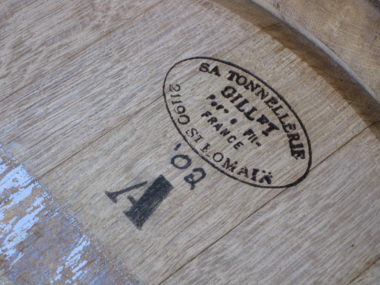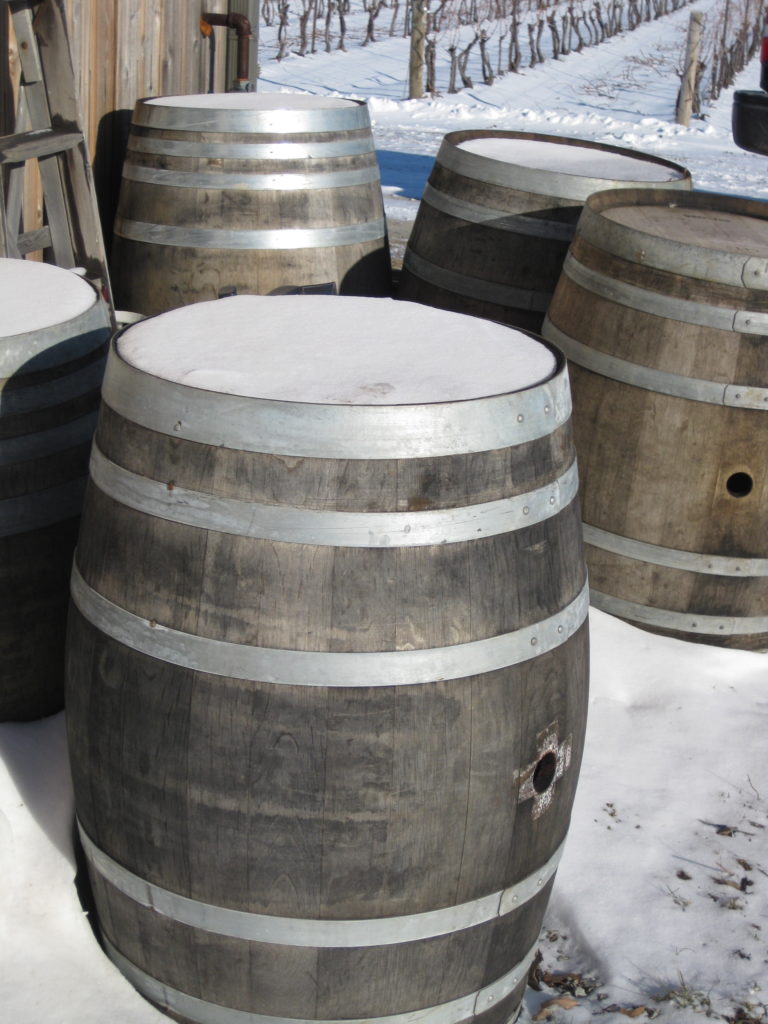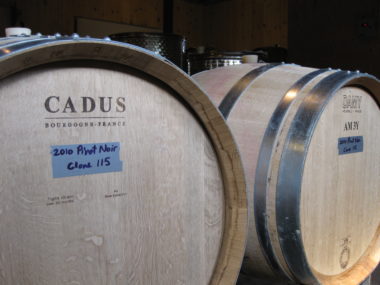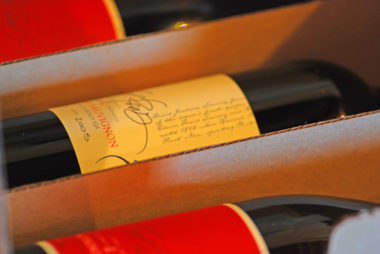Consider this my therapy. The ability to write and reminisce about a finished wine whilst going through the rigours of harvesting and vinifying that same grape varietal is a welcome shift of thought. It doesn’t get much rosier than the memories I have associated with our 2010 Pinot Noir.
Simply put, 2010 was an ideal vintage to grow grapes. Heat when you needed it and just wet enough for excellent vine growth, but not excessive vigour. The risk with Pinot Noir in these warm, dry conditions is overripening. Pushing the grapes to a point where they almost become “un-Pinot like”. For that reason we harvested our crop on September 4th – a full week earlier than we ever had before. All ripening parameters were dialed in. Sugars high, but not so high as to make the wine overly alcoholic (22 degrees brix) and decent enough acid (TA 7.5) to keep the pH low and aid in ageability. This would be a bold Pinot for sure, but not so bold that our Terroir couldn’t shine through.
We harvested 8 rows from our Old Block and 3 rows from our new Clone 777 block. The fruit was sorted, chilled and processed into bins for traditional punch-downs during fermentation. I chose to let the three bins cold soak for a few days and let the fermentations start via indigenous yeast. Each bin was then inoculated with a different cultured yeast to add complexity to the overall blend. The 777 bin was treated with a strain called BRL97, while the the old block was fermented with RC212 and W15. The fermentations lasted about 10 days whereupon each bin was pressed to barrel (25% new oak, all French). The wine was allowed to mature for 24 months in oak before bottling 143 cases on March 26th, 2013.
In the end this is a Pinot Noir that should age gracefully for at least another ten years. It’s the kind of wine that sneaks up on you and demands another sip, another glass…
Aromas: cherry, leather, mushroom, wet stone, vanilla, red currant, meat jus, violets
Flavours: cherry, pomegranate




